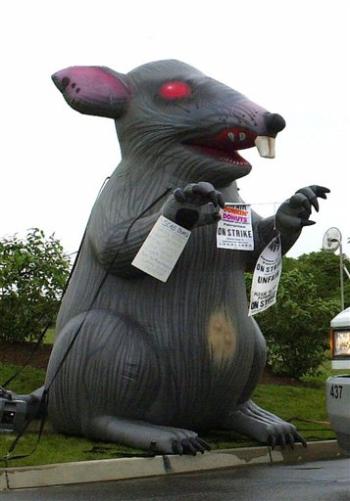According to the Houston Chronicle, the U.S. Court of Appeals for the Fifth Circuit this week heard oral argument on whether Texas’s school “moment of silence” law violates the Establishment Clause:
U.S. District Judge Barbara Lynn upheld the constitutionality of the law last year [….] The Crofts, of Carrollton, Texas, appealed Lynn’s ruling. On Tuesday, a three-judge panel from the 5th U.S. Circuit Court of Appeals in New Orleans heard arguments from lawyers on both sides of the case. […]
In 2003, state lawmakers amended an existing law that already allowed schools to hold a moment of silence to specify that students can use the time to “reflect, pray, meditate, or engage in any other silent activity that is not likely to interfere with or distract another student.”
[…]
Texas Solicitor General James Ho, who handles appeals for Attorney General Greg Abbott, said lawmakers included the word “prayer” to avoid confusion.
Judge Fortunato Benavides said advocates on both sides of the issue tend to distort the implications of laws governing school prayer.
“I can see why the Legislature might think that it might be important to let people know what they can do and put it in the form of a statute,” he said.
[…]
Ho and Cook both cited prior rulings by the U.S. Supreme Court to support their positions. Cook said the justices struck down an Alabama law that mirrors Texas’ minute-of-silence statute.
“By amending (the law) to include the word ‘pray,’ the Legislature, whether intentionally or otherwise, has advanced religion,” he wrote in court papers.
Ho said Alabama lawmakers had enacted their law “for the express purpose of defying the U.S. Supreme Court,” whereas sponsors of the Texas law wrote theirs in a way that would pass constitutional muster.
These statutes have always amazed me. For nearly 50 years, the Supreme Court has held that teacher or administrator-led (or teacher or administrator-endorsed) school prayer (or school prayer disguised as a moment of silence) is unconstitutional. To me, a school leading a prayer (even a nondenominational-ish prayer) is one of the worst kinds of establishment. It’s a government official endorsing religion (and often one religion over another), compelling kids (who likely do not yet have well-developed ideas about God) to engage in a particular religious practice, usurp parental authority on one of the most critical choices in child rearing, and create unnecessary tensions between student and teacher, peer and peer, and even religion and religion. Likewise, though, the Supreme Court has been very clear that kids don’t lose the rights to their own, particular faith at the schoolhouse door. Kids are more than welcome to pray (pretty much whenever they want), out loud or silently, in groups or individually.
Nonetheless, legislatures continue to believe, apparently, that kids do not have enough opportunity to pray at school on their own, and so they enact statute after statute mandating “moments of silence.” Most of the ordinances challenged fail, often because the legislature (like the Texas legislature here) enumerates that kids can pray during the moment of silence. The cases often turn on whether the legislature had the “purpose” of promoting religion (or one religion over another) when enacting the statute.
From a legal perspective, why is “purpose” paramount? If the legislation is truly neutral (that is, kids can do whatever they want, so long as they do it quietly) who cares if the legislators “hope” that more students pray? Is it that the implication is you’re “supposed” to pray? Or that you should feel bad if you don’t pray? That seems to be more of a question of implementation (that is, whether the school says something like “now take this moment of silence for reflection, OR TO PRAY, or to sit quietly in preparation for the day…”) rather than enaction of the statute.
But from a practical perspective, why do legislators continue to pass statutes like this? Kids who will want to pray will. They’ll do it when they get to their seats, right before the big test (when even non-religious kids may say a word or two), before lunch, at a Fellowship of Christian Athletes meeting, at a student-run bible study… whenever they feel compelled to. Students who don’t want to pray won’t, unless the government compells them (a clear violation of the Establishment Clause…. well, at least at the time of this writing.) I’ve never heard a high school student, much less an elementary student ever saying “man, if I just had more time to pray,” or “man, if I just had 45 seconds at the beginning of the day to ‘reflect,’ I’m sure my studies would be better.” And have these legislators ever been to a school and sat in a room where kids are supposed to be quiet? Like a study hall, or a classroom where people are taking a test? Half the kids are just trying to break the silence one way or another. Rather than starting the day well, my guess is that the “prayer kids” will just be harassed by the “non-prayer kids,” the “silence” will routinely be broken (by jokesters, by kids’ cell phones, or by other kids texting away), and everyone will just be more stressed.
Regardless of the constitutionality of this particular statute (which appears to be suspect to me, based upon the drafted language), I wish state legislatures had better things to do than to mandate when and where kids have to be quiet (or mandate who has to pray and when).
I look forward to all reasonable comments.






